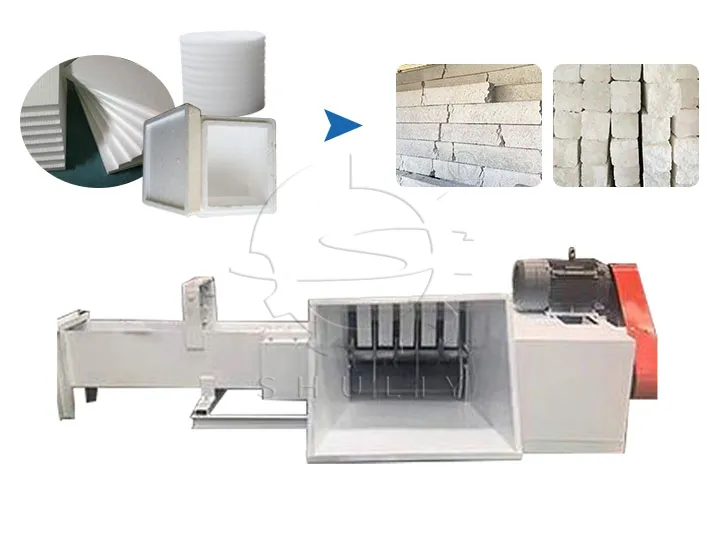
Styrofoam compactor extrudes the air out of it by applying constant and uniform pressure, making the foam denser. After this treatment, most of the foam comes in the form of stackable blocks. These blocks of foam can be sold for further recycling, making a significant contribution to the cause of environmental protection.
Introduction of styrofoam compactor
The EPS foam compactor is a highly efficient plastic waste foam processing machine that gradually compresses the EPS foam material into dense lumps by means of a mechanical device. EPS styrofoam recycling compactor do not require high-temperature treatment when compressing foam, which is the major difference between them and styrofoam melters. It is worth mentioning that the styrofoam compactor can greatly reduce the volume of foam for subsequent storage, transportation, and reuse.
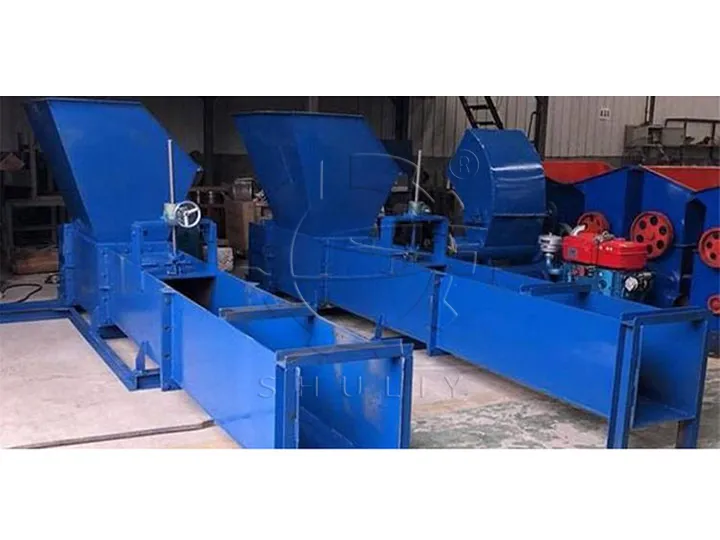
How does EPS foam compactor work?
- First, the waste foam material is put into the inlet of the EPS styrofoam recycling compactor.
- The styrofoam compactor is activated. A mechanical device or hydraulic system starts to apply a uniform and continuous pressure to the foam.
- Under continuous pressure, the foam material is gradually compressed into denser blocks or slabs.
- The compressed foam blocks or boards can be removed from the discharge port of the foam compactor machine for subsequent storage, transportation, or reprocessing.
2 types of styrofoam compactor
Vertical foam compactor machines and horizontal EPS styrofoam recycling compactors are both recycling equipment used to compress foam materials. However, they differ in structure and applicable scenarios.
Vertical foam compactor machine
The Vertical EPS foam compactor adopts the top feeding method, which means that the foam is put into the machine from the top and the compression process is carried out in the vertical direction. This design is suitable for environments where space is limited. Vertical styrofoam compactors are typically used in small or medium-sized production scenarios, such as restaurants, logistics centers, retail stores, etc.
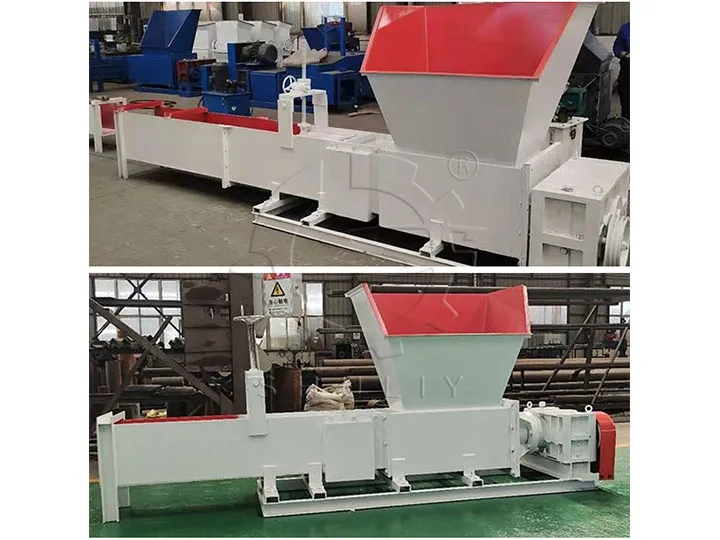
horizontal EPS styrofoam recycling compactor
The horizontal styrofoam compactor utilizes a side feed method where the feed opening is flush with the floor. This means that piles of foam can easily be fed into the foam cold press. It typically has a higher capacity and efficiency compared to vertical foam compactor machines. It is suitable for industrial environments that require large-scale foam scrap processing, such as industrial production, logistics centers, and large manufacturing plants.
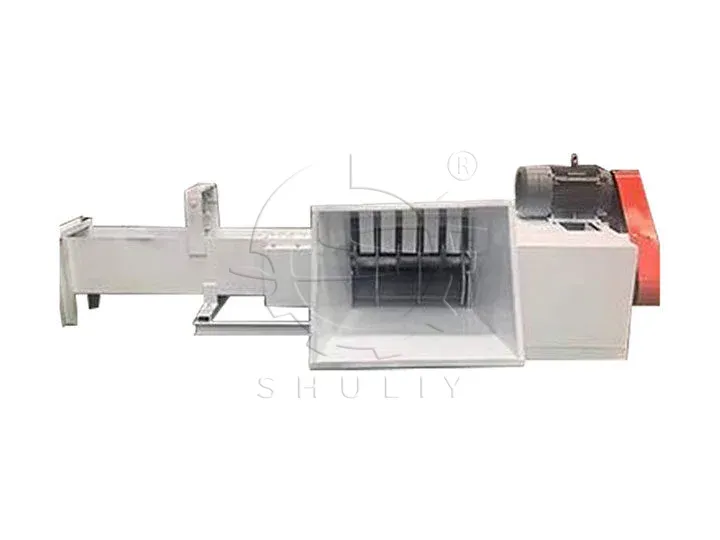
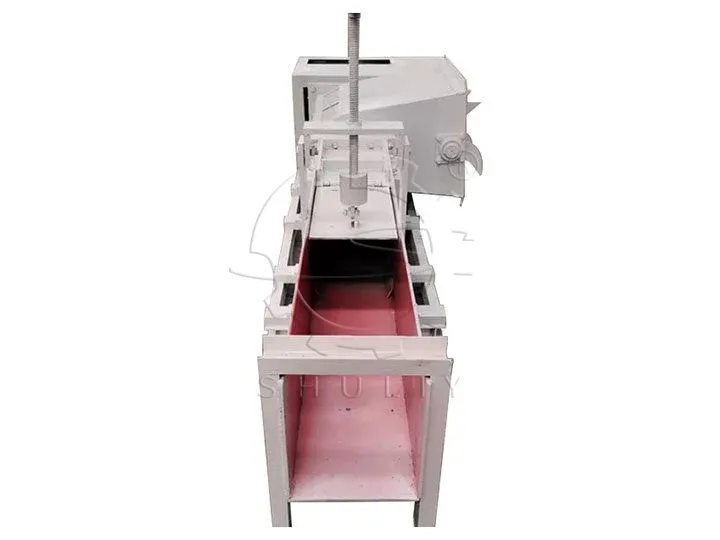
Parameters of styrofoam compactor
| Model | 260 | 300 | 350 | 400 |
| Power(kw) | 7.5 | 11 | 11 | 15 |
| Compression ratio | 40:01:00 | 40:01:00 | 40:01:00 | 40:01:00 |
| Input size(mm) | 600*800*1400 | 600*800*1400 | 800*900*1400 | 800*900*1600 |
| Output size(mm) | 260*260 | 280*280 | 350*350 | 400*400 |
| Capacity | 400-600 | 400-600 | 600-800 | 800-1000 |
| Weight | 600 | 700 | 800 | 1200 |
Advantages of styrofoam compactor
- High compression ratio: EPS foam can be effectively compressed into dense blocks or boards, with a high compression ratio of 40 times, greatly reducing the volume.
- No odor: Adopting the cold pressing method, no odor will be produced during the working process.
- Simple operation: The EPS styrofoam recycling compactor has an intuitive and simple operation interface, easy to use.
- Easy to maintain: EPS foam compactor structure is simple. Maintenance and upkeep are relatively easy, which can reduce the maintenance cost.
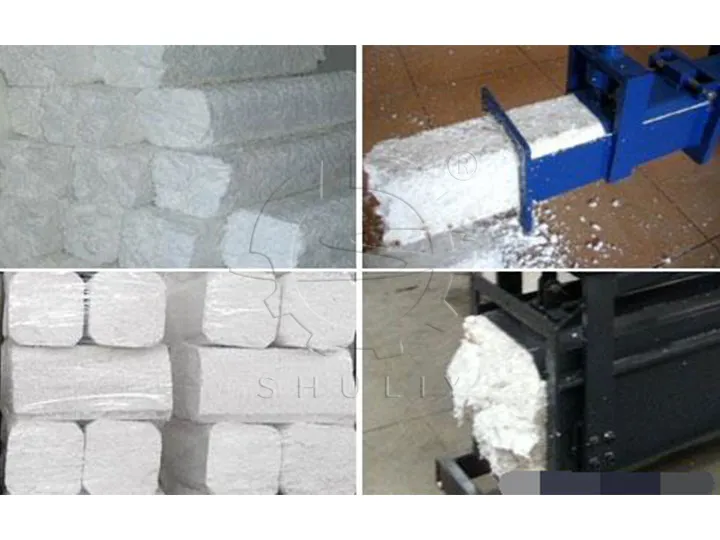
Successful case
One of our customers from Malaysia was faced with the problem of disposing of a large amount of foam waste. These foam wastes took up a lot of space during transportation and storage, which caused great difficulties in recycling. After consultation and analysis by Shuliy’s professional team, we recommended our styrofoam compactor to our customers to solve this problem.
The client has significantly reduced the volume of foam after using the EPS foam compactor. This enabled them to store and transport the waste more efficiently, saving significant resources and costs.
